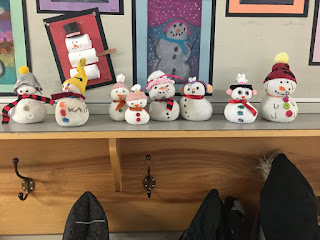Learning For the Week of April 6-9, 2020
The following are some ways for your child to learn from home for the week of April 6-9, 2020.
Let me know if you have any questions.
Please send us an email by the end of this week sharing a learning highlight that includes your writing and a picture.
Home Learning Tips:
- Set up a place in your home where learning will take place.
- Gather learning materials you may use: paper, pencils, coloured pencils or crayons, scissors, a ruler.
- Set up a home learning schedule that includes 1 hour of learning per day.
- Come up with a way to keep track of the time spent learning.
- Make sure that there is an opportunity to have a body break every 20 minutes.
- Keep a record of work using a notebook or duotang.
Math:
- Practicing Subtraction Facts:
- Continue your review of subtraction facts.
- If you haven’t finished making flashcards for subtraction facts from 20, please continue with this work. For example: 20-0, 20-1, 20-2, 20-3, 20-4, …. 19-1, 19-2.
- It is important for grade two students to work on their basic facts as well, as knowing basic facts will support them when they work on regrouping larger numbers.
- Write down everything you can about the number 21(gr.1), 45 (gr.2).
- Work on the following open-ended math problem:
Gr. 1: A basketball player scored 9 points in two games. What might her scores in each of the games be? Eg. They might score 4 points in one game and 5 points in the other, 4+5 = 9, What are other possibilities?
Gr. 2: A basketball player scored 72 points in two games. What might her scores in each of the games be? (see example above)
- Mathletics: Mathletics assignments have been updated for this week.
Reading:
Daily reading is highly recommended. We would suggest reading a variety of materials, several times a day. Look for reading materials at home, or from a website. Use these questions to help develop your child’s understanding of the
story.
Reading one-on-one with your child daily is very important at this time.
Understanding a Story
1. What is going on in the story?
2. What do you know about the people in the story?
3. How are the people feeling?
4. What might the person be thinking?
5. What do you think the person will do next?
6. What is this story about (main idea)?
7. When/where is this story happening?
8. Was there a ‘problem’ in the story?
9. How did they feel at the end of the story?
Why do you think that?
Spelling:
Grade 1
Do
Play
Said
Day
Don’t
|
Grade 2
It’s
Write
Phone
Right
Those
Make
|
Other
Too
Away
This
Back
two
|
H
Bestow
Attest
Formidable
Beseech
Astute
idle
|
Writing/Science Activity:
- Follow the lesson plan provided below (using simple fridge magnets)
- Create your own T-chart to record your findings (ignore #master 5)
- If you are interested in testing other materials, please do so just make sure you record them on your chart.
- Sort the items into groups based on the materials they are made of. What do you notice about the groups? Do certain materials stick to a magnet while other materials do not?
- Write a conclusion sharing your discovery. Be sure to include a labelled drawing with your conclusion.
The Following are Online Reading Websites You May Want to Look Into:
Google the following sites: getEpic, starfall, and ABCya
*Check out this incredible website: Scholastic Learn From Home
 |
